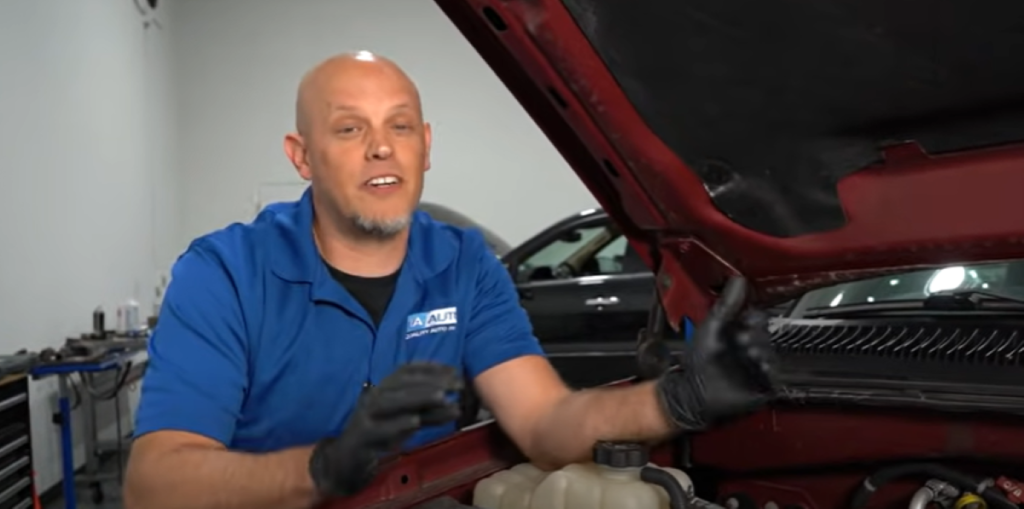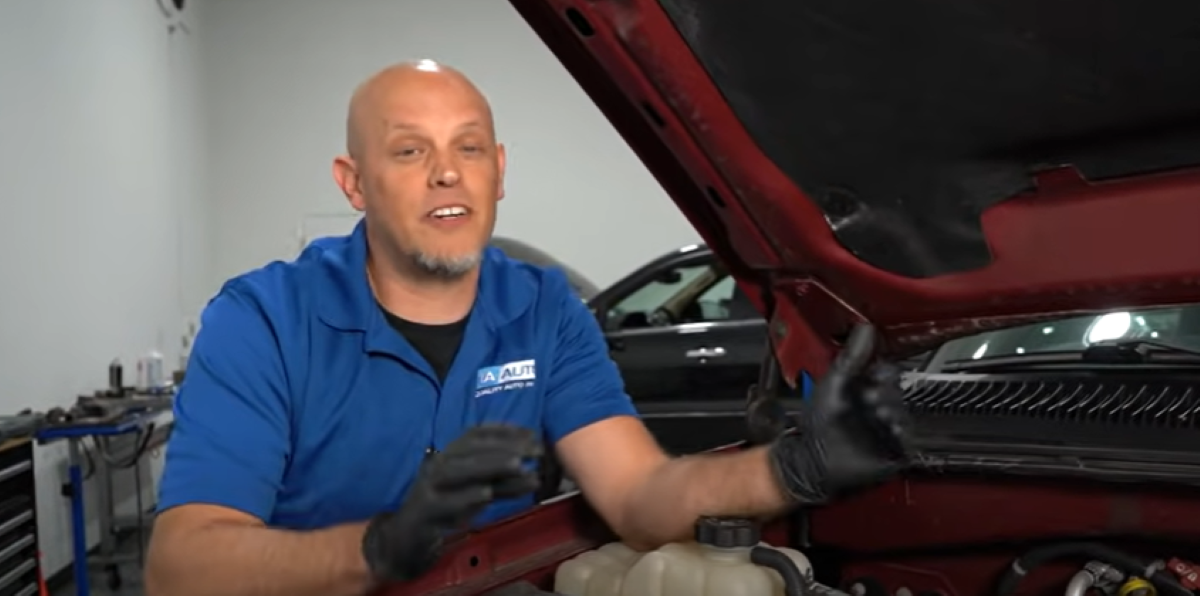If you want to know how to burp the coolant system, there are a few different ways depending on the vehicle. Learn the different methods you can use to burp the coolant system if you need to remove air from it.
Why Do I Need to Burp or Bleed the Cooling System?

Your engine may be overheating after working on the cooling system. Maybe you replaced the water pump, radiator, or the thermostat and added coolant back to the system. You’ll need to burp or bleed the cooling system to remove any air.
When you fill up the coolant system, the radiator may fill up entirely, but the engine may not fill up all the way, leaving air in the system. Air pockets can prevent coolant from circulating and can cause problems like the thermostat not opening. When the engine is cooling properly it will be at the right temperature.
How to Burp the Cooling System
Steps to burp the cooling system
- Find the Radiator Cap or the Coolant Reservoir Cap
You may find a radiator or coolant cap attached to the radiator to add more coolant. Some vehicles will have a separate tank or reservoir to store and add coolant.
- Replace Any Lost Coolant
Add coolant to the reservoir or radiator with the correct 50/50 mix.
For some vehicles, to burp the cooling system all you need to do is add coolant, start and let it run for 10 min, make sure the thermostat opens, which will burp air out, shut the vehicle off, let it cool down, and then top off the levels.
Some vehicles require more steps.
More on how to bleed a typical cooling system - Squeeze the Upper Radiator Hose to Remove Any Air Pockets
You could squeeze the upper radiator hose to remove some of the air pockets. The vehicle in this example self-bleeds a little with a hose from the radiator to the reservoir.
- Look for a Bleeder Screw and Open It If There
Some vehicles have a bleeder screw to remove air from the engine. In this example it’s on the thermostat housing. As you’re filling up the coolant system, open the bleeder screw. As coolant fills up, you’ll hear air hissing as it’s removed. Once you start seeing bubbles or coolant, tighten the screw and there shouldn’t be much air in the system.

- Attach a Funnel and Let Air Burp Out of the Cooling System
If there is a coolant reservoir or a radiator cap, you can use a funnel that attaches to where the coolant is added. You can fill the system up with coolant and run the engine with the funnel attached without worrying about coolant spilling out the sides. This raises the coolant level to improve burping.
With the vehicle running, you’ll notice bubbles burp out of the coolant, which is the system evacuating air. Once the bubbles subside, let the system and engine cool. Let rest of coolant fall into reservoir from the funnel, and then plug funnel with any remaining coolant and remove it. If there is too much fluid in the reservoir, you can use a transfer or fluid extractor pump to remove it.
- Raise Coolant Fill Area as High as Possible
One trick that may remove any extra air is by raising the coolant fill area as high as possible. Park on a hill, jack up the car, or rest it on car ramps.
- If Needed, Use an Airlift System
It may be difficult to remove air pockets from some vehicles. Maybe the engine is at the rear and the radiator is in front. It’s easy for air pockets to hide in corners with this kind of setup. For a situation like this, you can use an air lift system tool that attaches to the coolant fill area and puts a vacuum on the system.
You’ll need to tighten the adapter airtight. Then attach a hose that will hook up to compressed air, and then connect an air line to the adapter. With everything hooked up, open the valve and put on a vacuum. The adapter will have a gauge, and it should takes a couple minutes to evacuate all the air. It’s normal to see the coolant hose crushed down. Once complete, attach a hose to the adapter, dip it in a container with the right coolant for your vehicle, and open the valve. The system will suck coolant in. Once you start seeing air in the line, close up the valve and grab another container of coolant.
- After Filling, Run the Vehicle and Monitor Temperature and Air from the Vents
Once the air is out and the coolant is full, run the vehicle for about 10 minutes. You want to monitor the coolant level and make sure the thermostat opens up. Put the fan on the lowest setting. The heat setting can be on high, and set the settings so heat is blowing out of the vents.
Monitor the temperature gauge as the engine is running. You want it to be at about 210 degrees Fahrenheit. If it reads higher, you can try to rev the engine around 2,000 RPM, which might help the system burp out any more air and lower to the correct degrees. If the temperature is reading high and you notice no hot air is coming from the vents, there is probably an air pocket preventing any heat. - Check Upper Radiator Hose for Heat
To see if the thermostat is working, you can grab the upper radiator hose with everything running. If the thermostat is working it will circulate the hot coolant, but be careful since the hose may have heated up.
- Install the Thermostat Correctly
If you’re installing the a new thermostat, you may notice it has a hole, which is normal. The hole should be at top area so more air can travel through. If it was installed upside down, air won’t escape from the cooling system as easy. You could end up with an air pocket that’s harder to remove. If the thermostat was installed backwards, it won’t open and that could cause the vehicle to overheat.



I owned a Lexus rx350 2015
I changed the air pump and the strap plus I did purge the coolant system
My mechanic told me that I have coolant in my engine …
How I could end up with coolant in my engine ?!
From the cooling system purged ?!
Thanks for you time : )